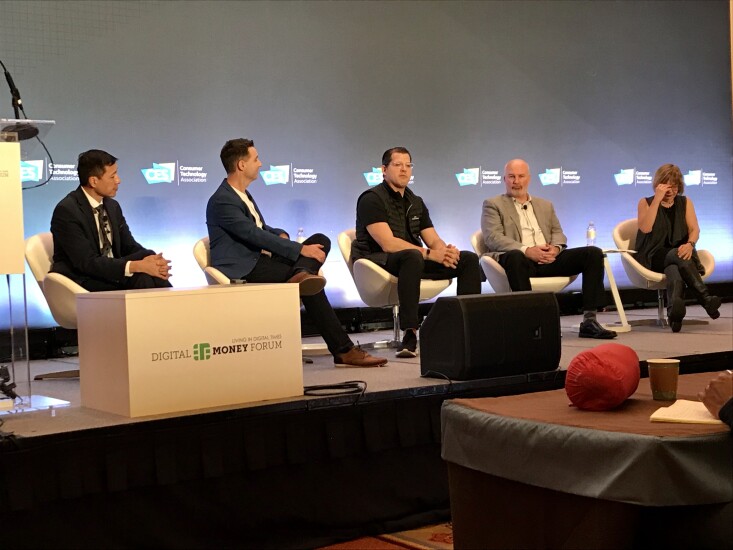Voice banking, once thought to be a niche market, appears to be gaining momentum, at least if last week's Consumer Electronics Show is any gauge.
HSBC and Google jointly announced at the show that they’ve been working for the past month on the Google nest hub interpreter mode, a smart-screen device that translates conversations in real time.
“Voice is becoming much more ubiquitous,” said Jeremy Balkin, head of innovation, retail banking and wealth management, HSBC US. “It’s inevitable that the customer desire to use voice as a channel is going to intersect with financial services. We see that, we believe that, and we wanted to do something about it.”

Balkin said HSBC is the first and only bank to pilot this technology, which is being tested in Manhattan branches. About a third of HSBC’s retail customers in the U.S. are “internationally minded,” he said.
“We know that 22% of Americans speak a language other than English. That’s about 67 million people,” he said. “Clearly financial inclusion is an issue for everyday Americans. Imagine what it's like if you're from another country or you speak another language. The barrier is even higher.”
Google also showed a related product at the show: its new Bluetooth earbuds, called Pixel Buds, which can work with Google Translate.
“I can talk to somebody who's Chinese and not know Chinese and they can talk to me not knowing English and the conversation gets translated in real time,” said Todder Moning, product innovation director at U.S. Bank. The earbuds can also turn down background noise in a restaurant so the wearer can better hear the person they’re with.
“It's an example of what 5G is going to enable as it rolls out over the next few years,” Moning said. “It will connect way more devices. It will have lower latency, it'll be faster.”
Following is a look at these and other tech innovations unveiled at CES, what bankers thought of them and how they could impact financial services:











